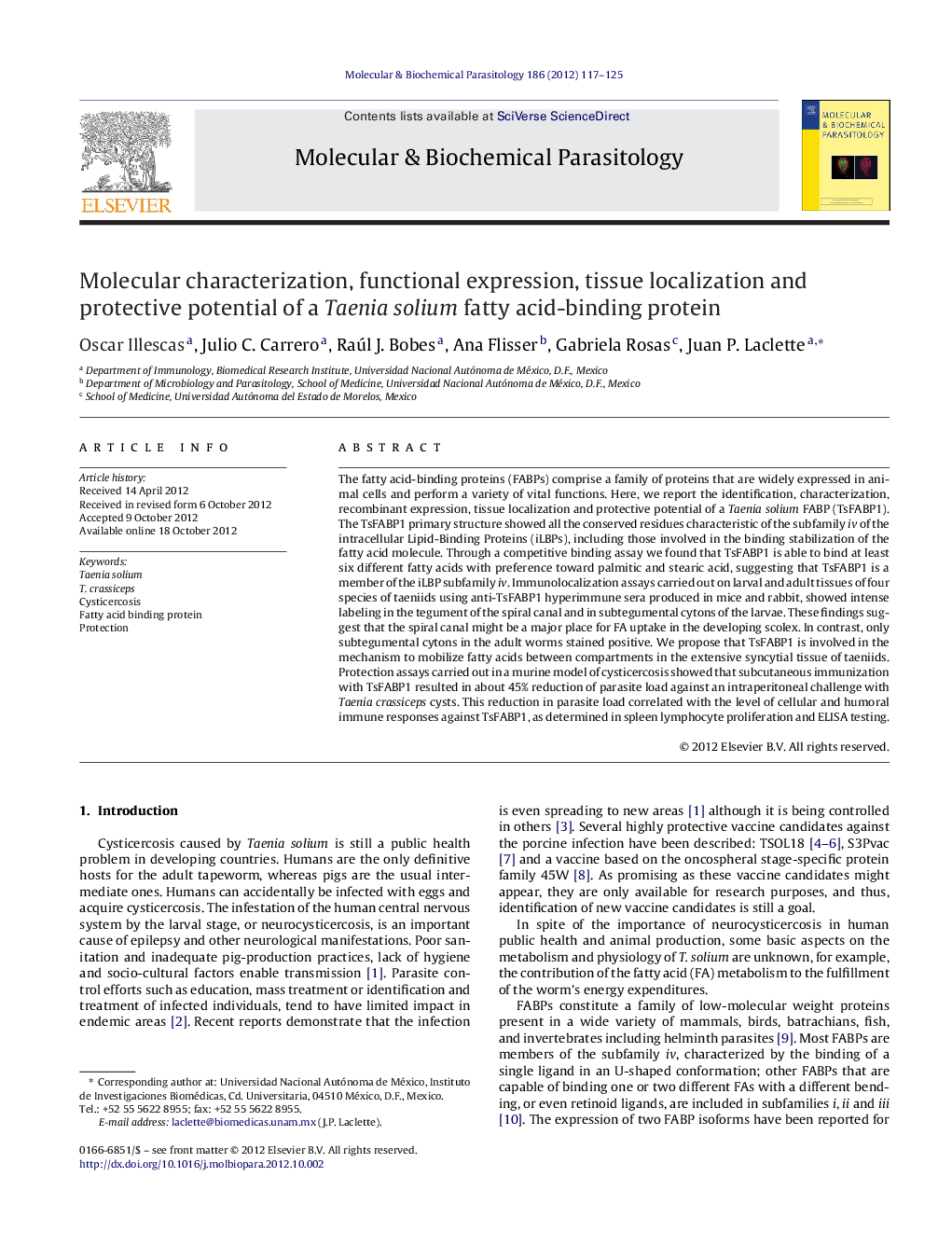| Article ID | Journal | Published Year | Pages | File Type |
|---|---|---|---|---|
| 2829806 | Molecular and Biochemical Parasitology | 2012 | 9 Pages |
The fatty acid-binding proteins (FABPs) comprise a family of proteins that are widely expressed in animal cells and perform a variety of vital functions. Here, we report the identification, characterization, recombinant expression, tissue localization and protective potential of a Taenia solium FABP (TsFABP1). The TsFABP1 primary structure showed all the conserved residues characteristic of the subfamily iv of the intracellular Lipid-Binding Proteins (iLBPs), including those involved in the binding stabilization of the fatty acid molecule. Through a competitive binding assay we found that TsFABP1 is able to bind at least six different fatty acids with preference toward palmitic and stearic acid, suggesting that TsFABP1 is a member of the iLBP subfamily iv. Immunolocalization assays carried out on larval and adult tissues of four species of taeniids using anti-TsFABP1 hyperimmune sera produced in mice and rabbit, showed intense labeling in the tegument of the spiral canal and in subtegumental cytons of the larvae. These findings suggest that the spiral canal might be a major place for FA uptake in the developing scolex. In contrast, only subtegumental cytons in the adult worms stained positive. We propose that TsFABP1 is involved in the mechanism to mobilize fatty acids between compartments in the extensive syncytial tissue of taeniids. Protection assays carried out in a murine model of cysticercosis showed that subcutaneous immunization with TsFABP1 resulted in about 45% reduction of parasite load against an intraperitoneal challenge with Taenia crassiceps cysts. This reduction in parasite load correlated with the level of cellular and humoral immune responses against TsFABP1, as determined in spleen lymphocyte proliferation and ELISA testing.
Graphical abstract. Long chain fatty acids are essential for Taenia solium. TsFABP1 might play a role in the tissue mobilization of these crucial nutrients through the syncytial tissues of this parasite.Figure optionsDownload full-size imageDownload high-quality image (146 K)Download as PowerPoint slideHighlights► Molecular characterization and recombinant expression of T. solium fatty acid binding protein (TsFABP1). ► Functional assays allowed determining the TsFABP1 fatty acid binding affinity and specificity. ► TsFABP1 localization in parasite's tissues was associated to host interacting structures. ► The cytoplasmic mobilization of fatty acids in this syncytial organism is discussed. ► The protective potential for TsFABP1 was explored in a murine model of cysticercosis.
